Lenovo Yoga Book 9i First Impressions
- Paul Thurrott
- Jun 01, 2023
-
7

Rejoice, Surface Neo fans: Lenovo’s Yoga Book 9i delivers everything that Microsoft promised but failed to deliver and more, in a beautiful and premium form factor.
Announced at CES 2023, the Yoga Book 9i is a dual-screen tablet or laptop, depending on your definition of these things. Each display is identical, so there are two 13.3-inch multitouch- and smartpen-capable OLED panels with a 2.8K (2880 x 1800) resolution and a 16:10 aspect ratio, each of which outputs 400 nits of brightness. In early use, I can tell you that the displays are superb, with all of the bright colors and inky blacks that we expect from OLED.
Windows Intelligence In Your Inbox
Sign up for our new free newsletter to get three time-saving tips each Friday — and get free copies of Paul Thurrott's Windows 11 and Windows 10 Field Guides (normally $9.99) as a special welcome gift!
"*" indicates required fields

The hinge that connects the two displays is hidden by a speaker bar, and between the bezels on each display, the air gap between each display and the speaker/bar hinge, and that speaker bar and its underlying hinge, there’s a good one-inch break in display continuity. But I think that’s the point of the speaker bar: rather than try and minimize the gap, which would weaken the device’s integrity, Lenovo has simply embraced it. And that’s fine: there’s always gap in a dual display setup.

The displays are identical, but the two sides of this device are not because one is literally just a display with the webcam and Lenovo’s new “reverse notch,” while the other is the base and contains all of the internal components plus its limited range of expansion ports, which includes a single Thunderbolt 4/USB-C port on the left and two Thunderbolt 4/USB-C ports on the right.
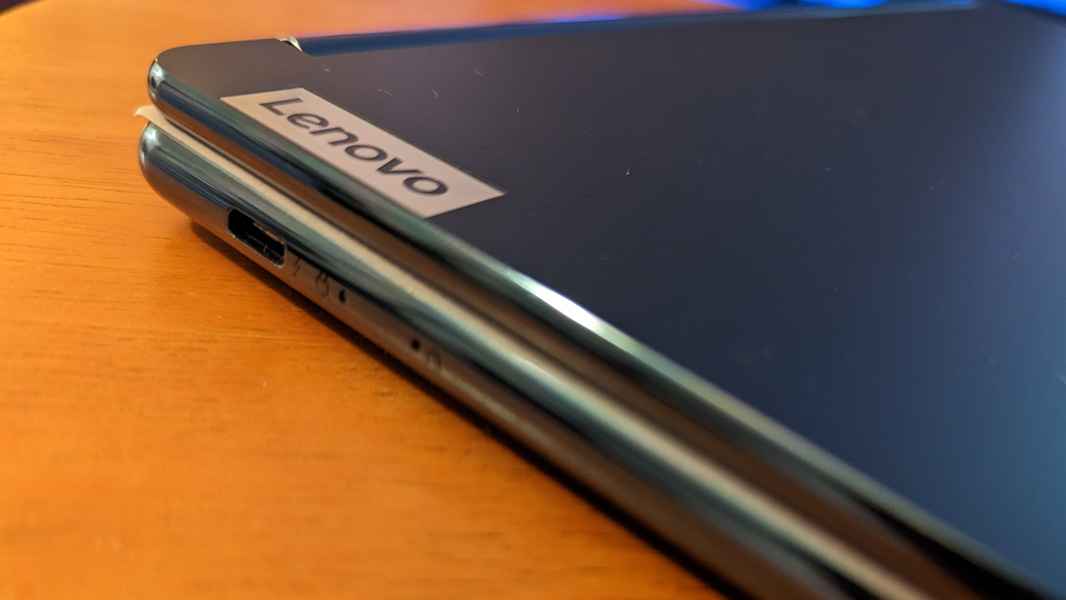
Inside the Yoga Book 9i is a real computer, with a 13th Gen Intel Core i7-1355U processor, Intel Iris Xe graphics, 16 GB of fast LPDDR5X RAM, and 1 TB of PCIe SSD Gen 4 storage. There’s Wi-Fi 6E and Bluetooth 5.1 for connectivity, and a 5 MP webcam with Windows Hello facial recognition capabilities.
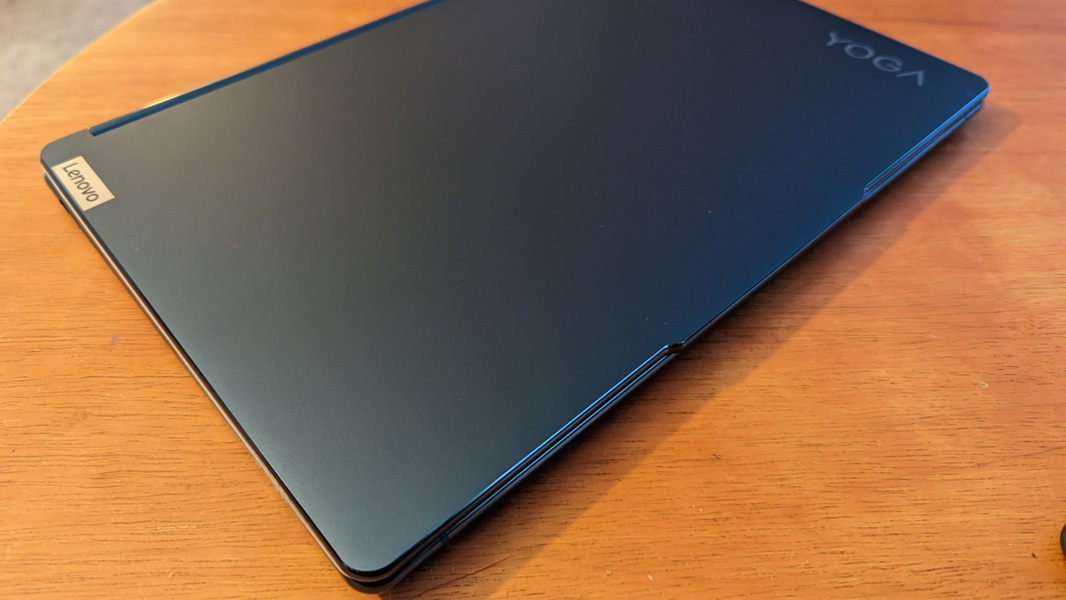
Lenovo claims the PC can achieve up to 7.3 hours of battery life, or up to 14 hours with single-screen video playback. It supports rapid charge and comes with a 65-watt wall-mounted charger.

But you want to know about the Yoga Book 9i’s unique usage modes. And that is indeed where things get really interesting.
Most PC makers market their convertible designs as “2-in-1s,” which is a bit of a misnomer as these PCs support four unique usage modes—laptop, tent, presentation, and tablet—not two. But the Yoga Book 9i takes things to 11, and almost literally. I’m having trouble counting all the ways in which you might use this.
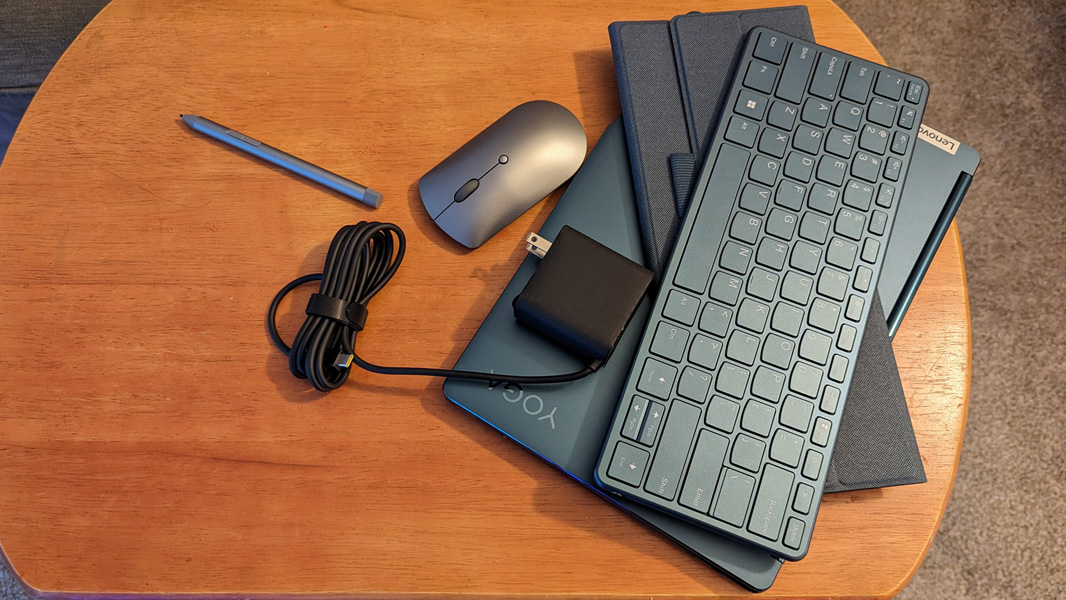
The most obvious draw, of course, is just using it as a dual-screen laptop, though this is complicated by the fact that you can do so in two different configurations. Using the bundled origami folding stand, which provides an integrated pen holder and protects the bundled keyboard while in transit, you can align the Yoga Book 9i’s two displays side-by-side, with each in portrait mode.
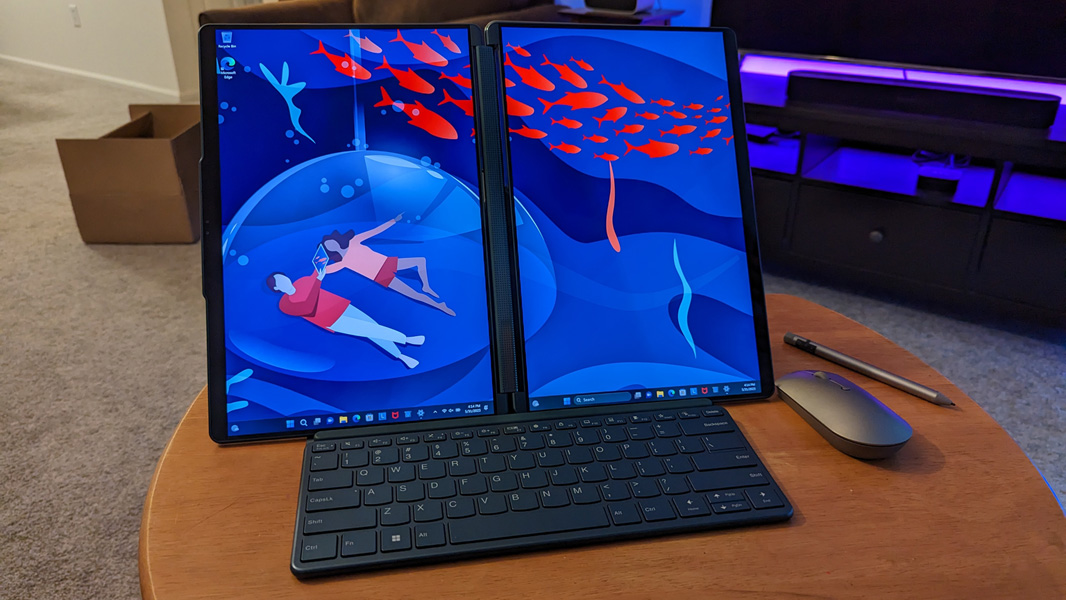
Or you can enjoy the unusual and unique configuration in which one screen is on top of the other, with each display in landscape mode and the device itself extending twice as tall as the normal height for a laptop. This mode is interesting to me because it puts the webcam in a place that provides a far more flattering view, as opposed to the up-the-chin view you normally get with a laptop.
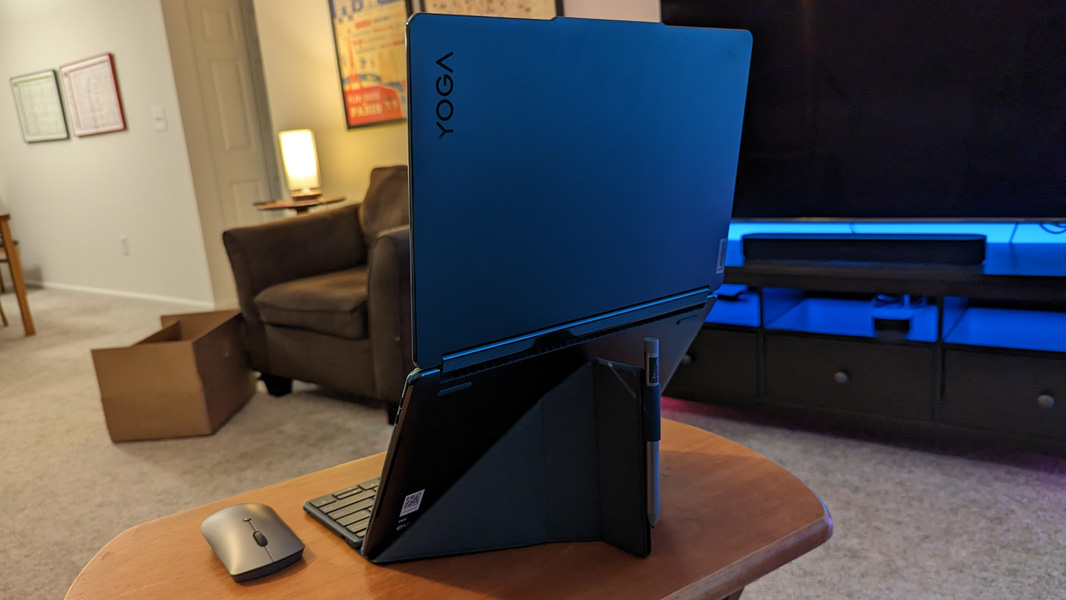
That stand has magnets that keep the keyboard in place, but the keyboard is Bluetooth based so you can also detach it and use it anywhere you want nearby. Unfortunately, it lacks a touchpad, so Lenovo bundles a mouse with the PC. That’s a lot of stuff to carry around—the device with the two screens, the keyboard wrapped in the stand with the pen attached, the mouse, and a power supply—but I feel like Lenovo made the right design decisions here given the form factor.
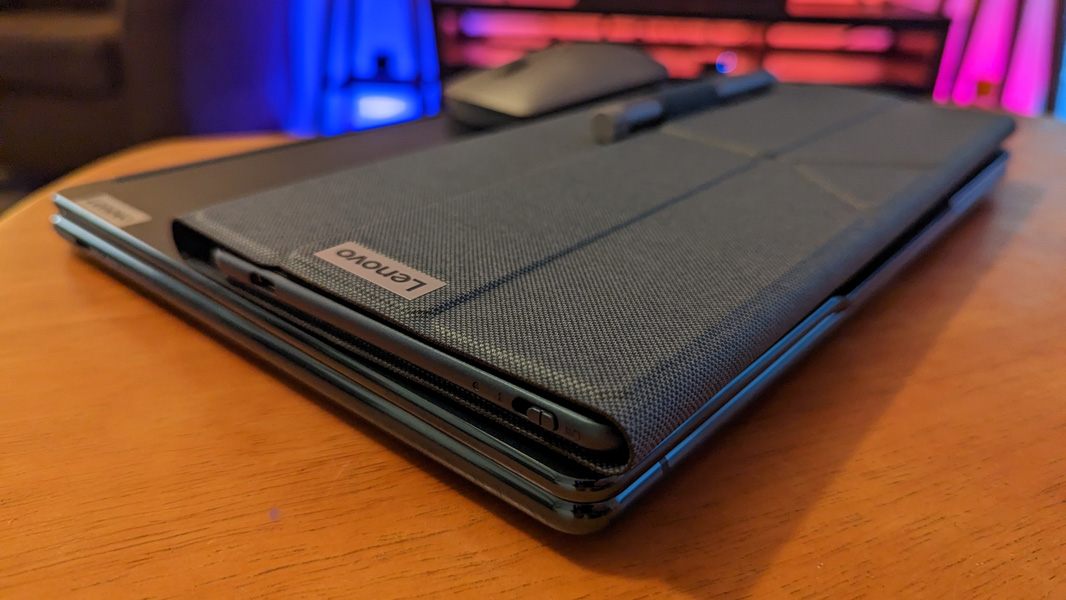
But really, there’s so much more.

You can use just the PC itself in laptop mode, and have a virtual keyboard take up the lower display. Or you can write on that lower display while viewing content on the upper display. You can use it like a tablet. In tent mode, where you can alternatively give a presentation in which you see one screen and your viewers see the other. There’s a special game mode where you can use on-screen controls on the bottom display, while other games support both displays (a racing game with the main view on the top and an overhead view of the track on the bottom, for example). It kind of goes on and on.

Helping matters, that speaker bar works in any orientation, supports Dolby Atmos, and is powered by four Bowers & Wilkins speakers, so that combined with the displays should be pretty interesting for entertainment. (That said, I’d use a single display to watch videos, of course.)
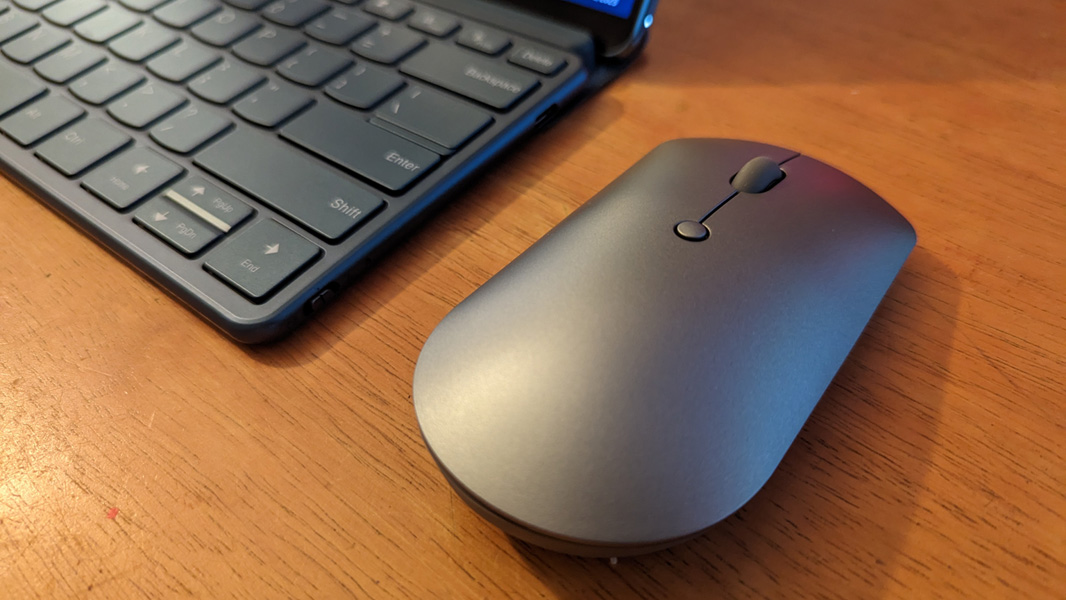
Well, this one will be interesting, that’s for sure. But even with just a few hours of time with the Yoga Book 9i, I feel that it’s a lot more practical than some of Lenovo’s other experimental designs, like the ThinkBook Plus Gen 3, which features a second, 8-inch display in its wrist rest. This one might actually make sense. Pricing looks to be about $2100.
More soon.